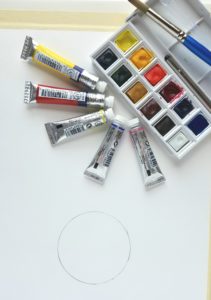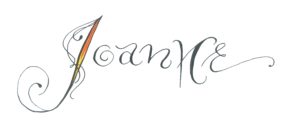
Mix a Color Wheel
Mix a Color Wheel
May snuck up on me. I wanted to keep studying style, even repeating the exercises over and over with new objects and letters. So, I will with a continued style study. You can find the introduction here.
Sometimes I feel constrained by time. It places boundaries on me that I don’t always like. In saying that, give me a time? I tend to be early. Sometimes too early. But there are times when time just feels like it wants to tie me down. I can feel that way when I’m working on projects here. Because I frame ideas and projects by the length of the month. At times, I reach the end of the month wishing for more time. So instead of framing by the month, I think I’ll just go with an idea until it feels complete before I move on to the next thought. I might even intersperse it with other projects, like a Mother’s Day card.
Spring showed up late at our house, and this week it feels like we skipped it completely. Spring color is three weeks behind schedule, so I am mesmerized as it appears on trees, flowerbeds and fields.
As the color pops outside, it seems to be a good time to talk about color in art and expression.
What colors jump out at you?
What colors make you cringe?
What colors do you pick over and over again?
What colors do you decorate with or wear?
Why do you choose certain colors?
What do your color choices say about you?
Let’s explore color and do a little mixing with primary, secondary, and tertiary colors to form a color wheel.

Is color mixing important?
You can go buy all of the colors and paint to your heart’s content. You can. You can even make a color wheel from all of these premixed colors if you already have them on your palette. But eventually, you might want a color that you don’t have when you don’t have time to go to the store. If you know how to mix, you don’t have to stop painting.
Do you have to know how to mix?
No.
Does it add value to your understanding of color?
Yes, yes, yes!
As you mix, think about the questions above. Which colors do you claim as yours?
Here are the basics. Three primary colors, when mixed together, form all other colors.
Yellow, Red, and Blue.

Mix any shade of these that appeals to you. Don’t worry about perfectly finding primary colors. Use this exercise to help you find and mix colors that appeal to you.
From there, secondary colors are the colors formed first as you mix the primary colors.
Yellow + Red = Orange
Red + Blue = Purple
Blue + Yellow = Green

Again, mix the shades of these colors that appeal to you. Yes, in the end we want a color wheel but because we’ll mix colors from the shades you choose, you should still end up with a range of colors. Do you see how my blue, when mixed with yellow, makes a teal green rather than a regular green. I like it.
Tertiary colors form from primary and secondary color mixes.
Yellow + Orange = Yellow-Orange
Orange + Red = Red-Orange
Red + Purple = Red-Purple
Purple + Blue = Blue-Purple
Blue + Green = Blue-Green
Green + Yellow = Yellow-Green

Mix the shades that appeal to you. If one color mix seems a bit dull, add a smidgen more of one of the colors you mixed together. I don’t mix half and half of colors unless I like the resulting shade. The blue that I picked can overpower other colors, so I use my eye to judge the mix. This is your wheel, your art. Make something you like. Just see where it takes you.
Now, take all of these colors and make a wheel. It can look like pie pieces, circles, splashes, or a picture. It doesn’t even have to be a wheel. Make it Yours.

If you want to share what you made, head over to Instagram and post it to #patchesofordinary. Don’t forget to tag me @joanneegroff so I am notified when you post it. I want to see it too.
I love to make and use color wheels. I hope you’ve enjoyed making yours too.
Write it. Draw it. Dance it. Dream it.


